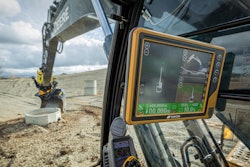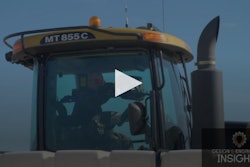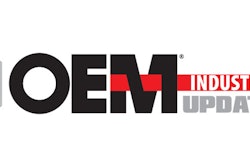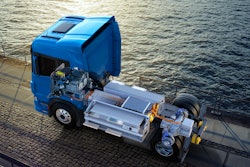
Each year, our State of the Industry issue looks at the top trends and technologies within the heavy equipment industries. We also dig into current and future market conditions, as well as regulations which may currently or in the coming years have an impact on how the industry will go about designing its equipment.
To get the best insights, we speak with executives from a variety of companies working in the industry—everyone from associations, to OEMs to component suppliers. Below are responses provided by Tom Hansen, Senior Director, Global OEM Development and Sales, Topcon Positioning Systems.
Read all of this year's executive Q&As.
Automation & Smart Systems
How has automation helped the heavy vehicle and equipment industries become more productive?
When you examine the last 20 years of automation in the construction industry, you see the ever-increasing capabilities of systems that continue to provide significant improvements in speed, accuracy, integration with machines, and more intuitive user interfaces. What started with using a laser to confirm a flat planer surface is now utilizing multi-constellation GPS for multifaceted 3D models with up to millimeter level accuracies.
These systems have successfully addressed the industry's challenges in finding skilled labor, driving faster speed to completion for job sites to remain on demanding timelines, and utilizing both existing and new equipment more effectively. In addition, these systems help reduce costs through fuel savings from more effective machine usage, increased job site safety, reduced emissions, and reduced consumption of products due to being on grade every single time. These advantages are seen in setting up job sites, grading, paving (asphalt and concrete), and allowing full BIM qualified jobs. This creates an accurate 3D model of the completed job, whether it is a high-rise building, sewage treatment plant, or interstate highway, for long-term support during its expected life span.
What further benefits will automation bring to the heavy vehicle and equipment industries?
Automation will continue to drive efficiency with new capabilities to better utilize and improve processes in the industry. The world faces a challenge with significant infrastructure needs and not enough resources to address the demands. Cutting costs for development while improving the end-product will help narrow the gap the global market faces.
The industry-wide shortage of experienced operators continues to be a challenge. Automation and machine control systems such as the Topcon X-53x Automatic Excavator allow less seasoned operators to gain capabilities that would take years of on-the-job experience to be equaled. With its intuitive user interface, this system helps operators become familiar with the interface and experts to quickly provide value earlier than previously through on-the-job experience. This benefits both the operator and employer by creating high-value personnel to keep jobs on time and on grade. 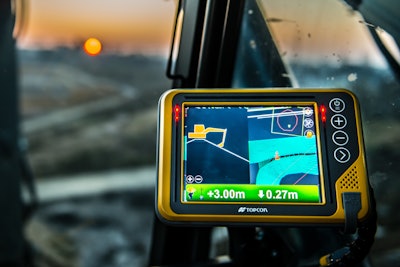 The Topcon X-53x Automatic Excavator is designed to aid machine operators of all skill levels.Topcon Positioning Systems
The Topcon X-53x Automatic Excavator is designed to aid machine operators of all skill levels.Topcon Positioning Systems
How has the development and use of smart systems evolved, and what further impacts will they have on the industry?
When you look at the progress in pieces, 5 years ago, 10 years ago, and 20 years ago, the level of performance continues to accelerate. Through cost-effective IMUs (inertial measurement units), GNSS, displays, and controllers, contractors are getting rapid ROI for their newest investments with performance and speed not imagined 20 years ago. Adding to this is the potential for greater levels of safety and communication in real-time of progress and needs on a specific job site. The industry will transform the concept of on-site manufacturing. This trend will continue as the market continues to move in the direction of automation and autonomy.
What role will telematics continue to play in the heavy vehicle and equipment industry?
Telematics have played an important role in getting to this point, but I do not feel they have been fully utilized by the industry. Topcon has products such as Sitelink that provide real-time updates for job sites for a multi-national or local contractor. The adoption of this technology using telematics as a pipe, and adding machine health and service requirements to the mix, will create a level of efficiency and reduce unexpected downtime to near zero. That future is available now with current products like Sitelink. Continued adoption will drive greater information and AI (artificial intelligence) that helps the contractor sort through the noise to determine the best real-time decisions to make.





